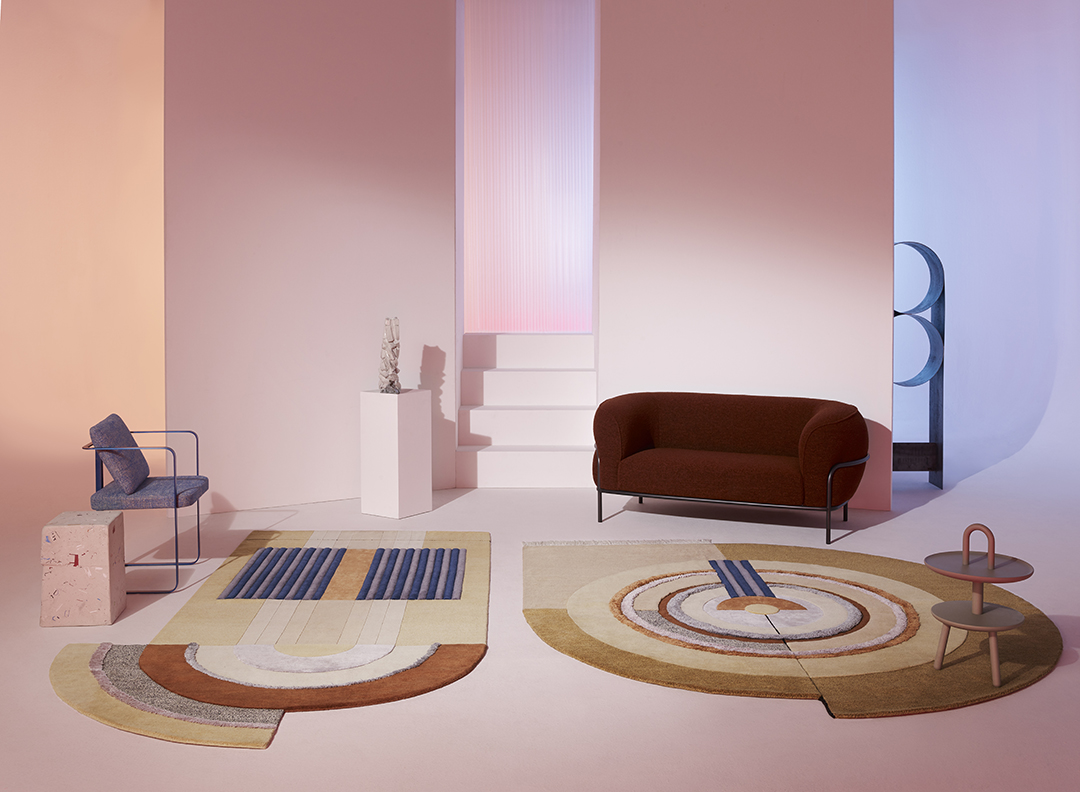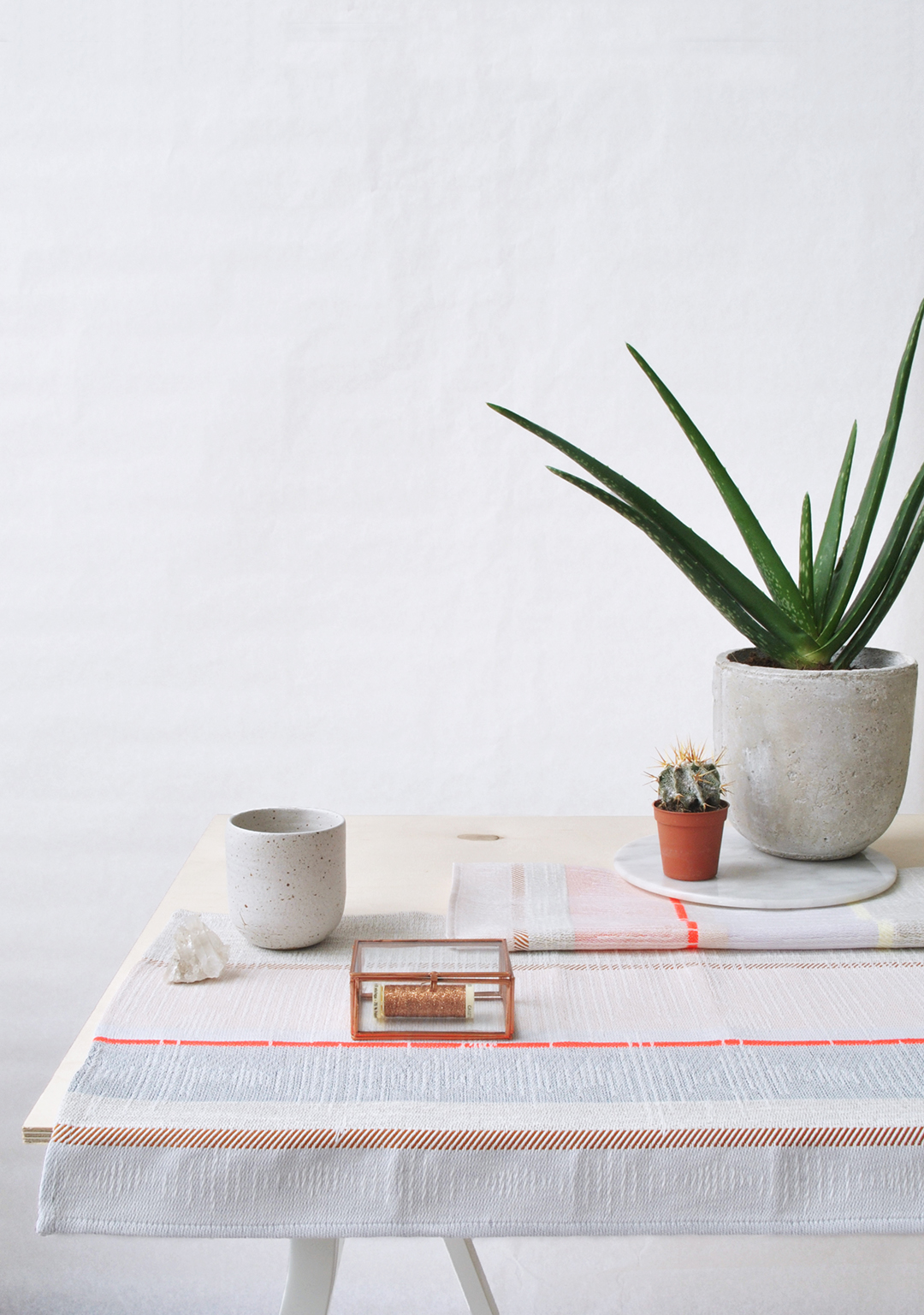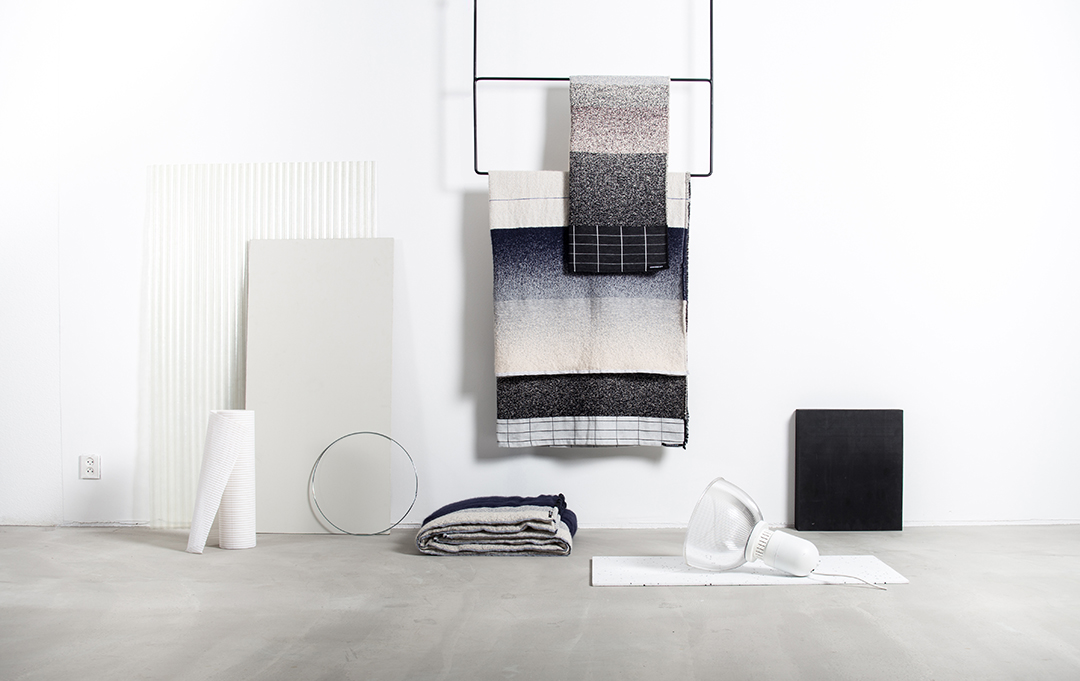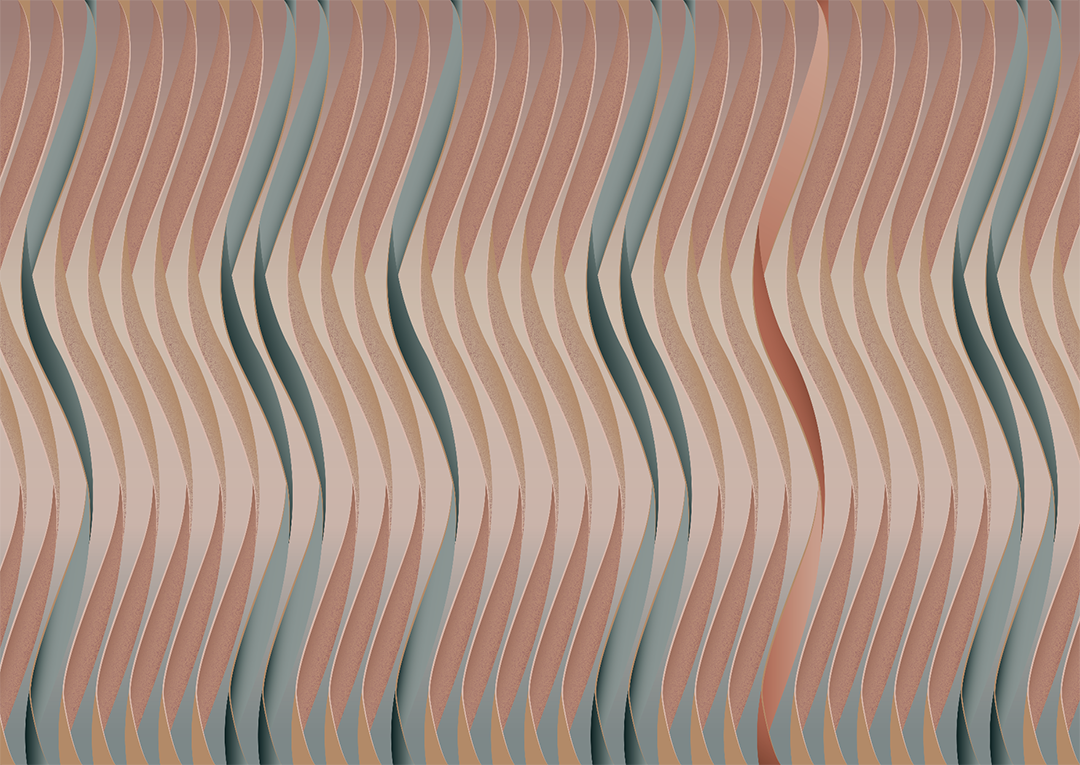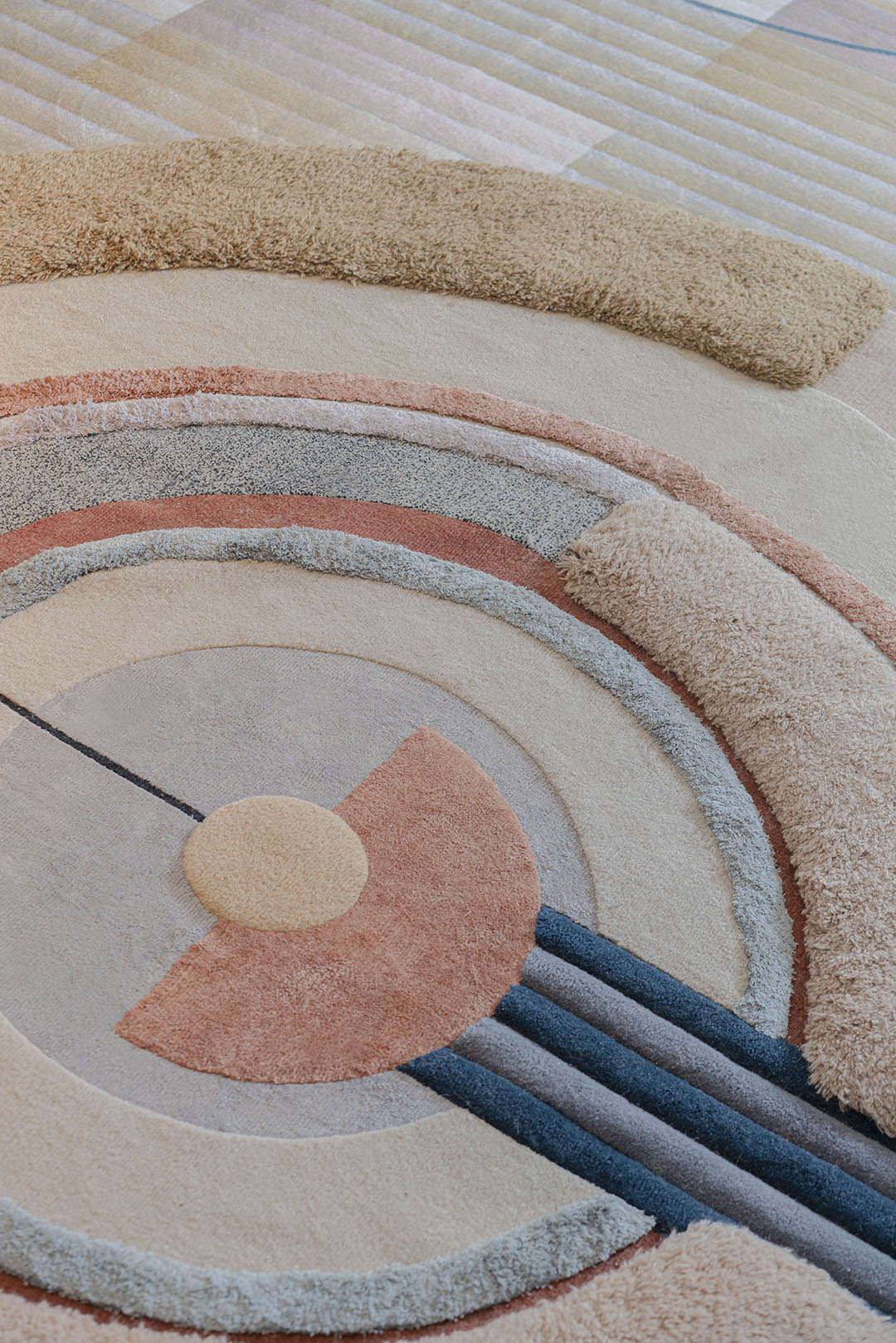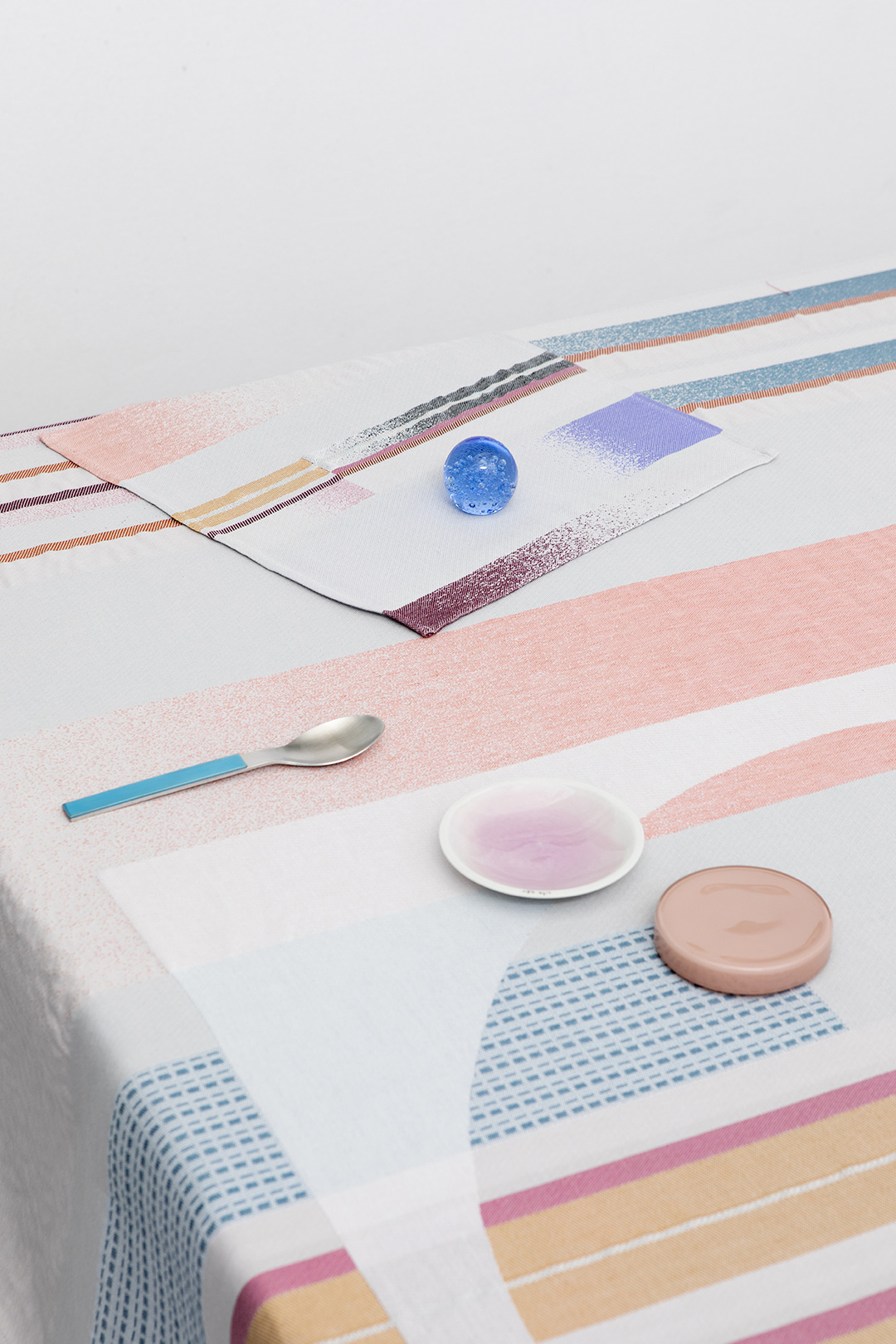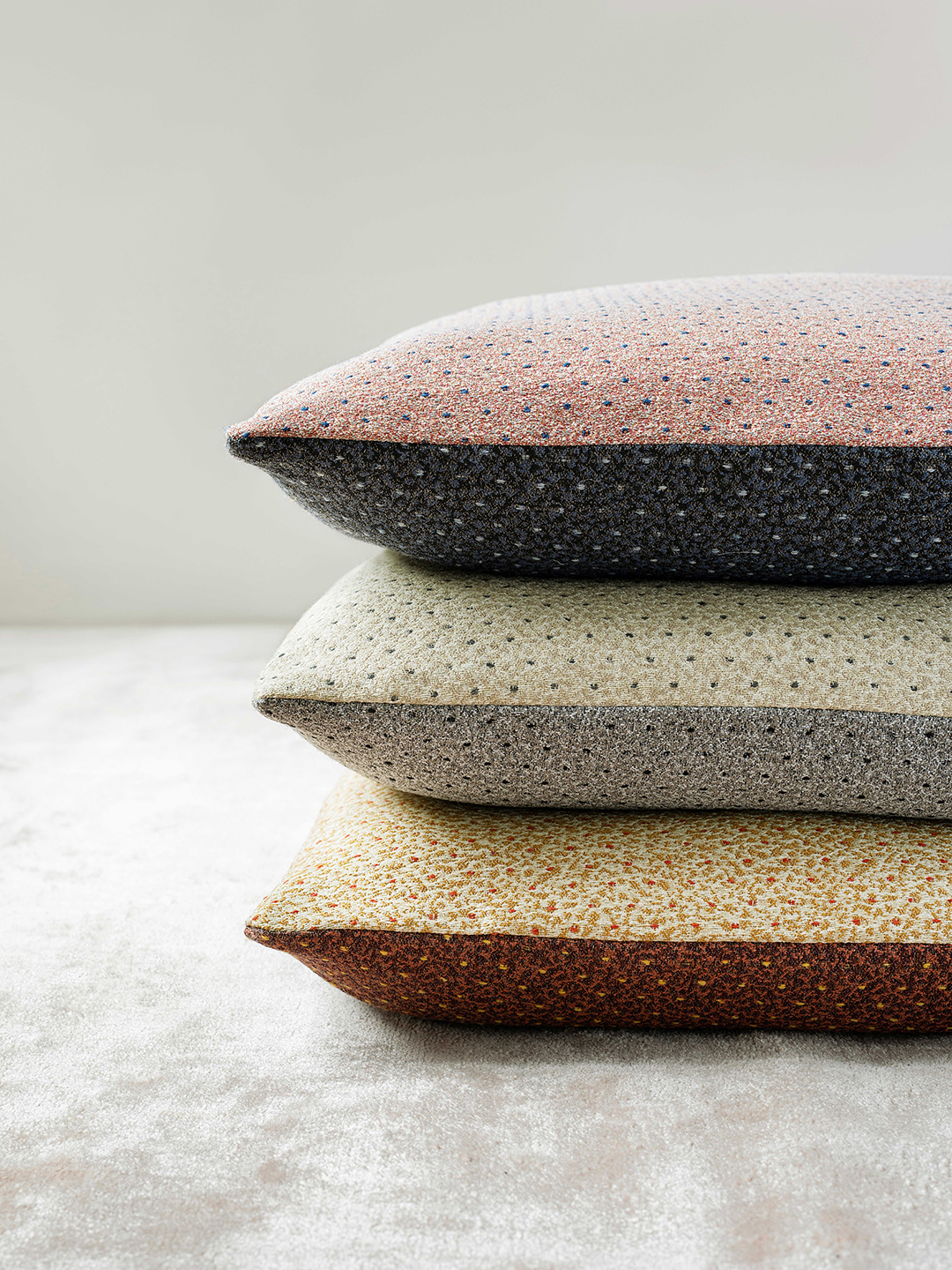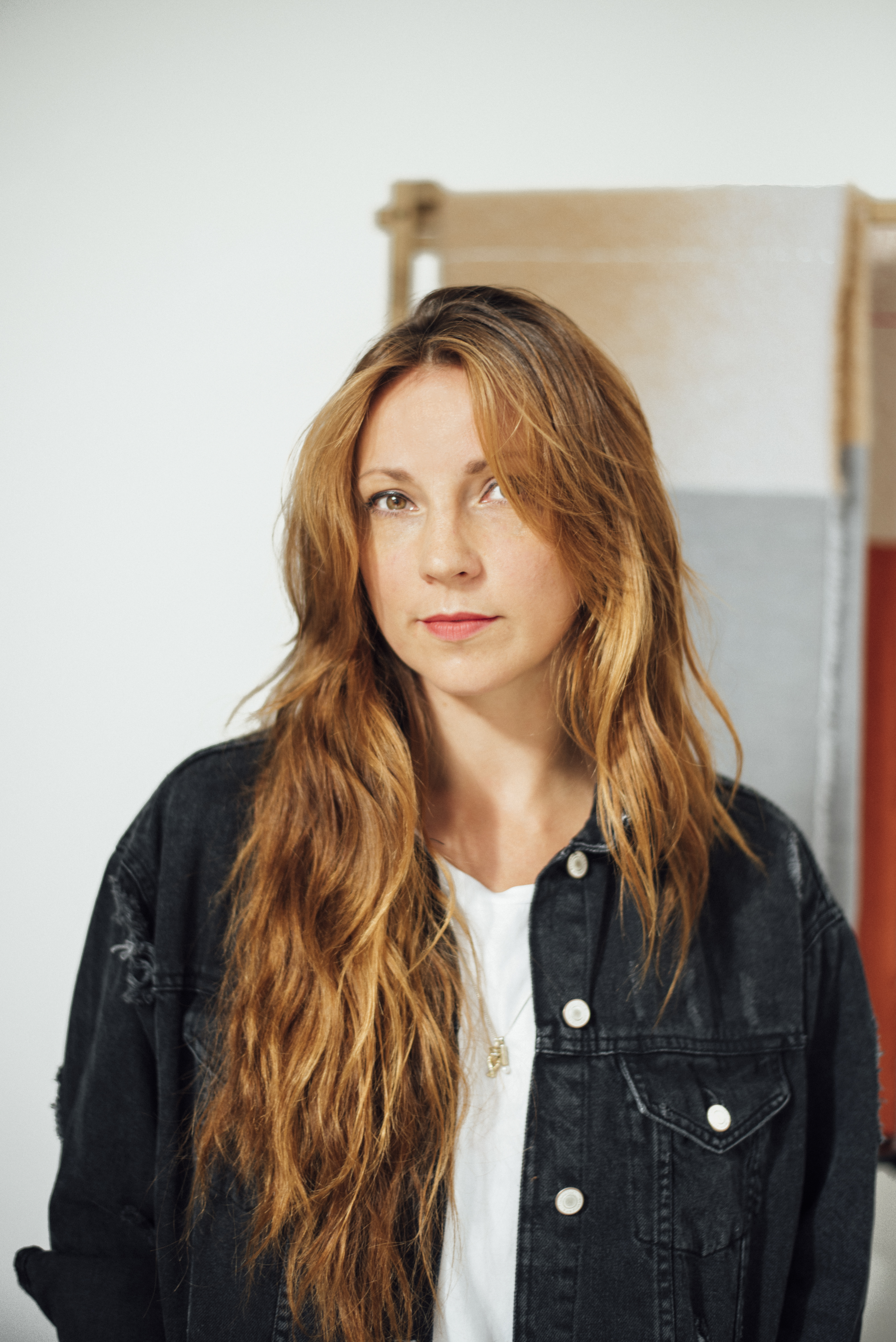
Textile design has always been at the heart of Dutch designer Mae Engelgeer’s work, from her high school days to her studies at the Amsterdam Fashion Institute and Sandberg Instituut. Since opening her studio in 2013, she has nurtured her curiosity for the craft, experimenting within the existing boundaries of textile production to elevate old techniques to a modern stage. Mae Engelgeer’s work embraces subtle color palettes, patterns and linear elements. Complex compositions merge with perfection to establish harmony. Creative explorations into the contrasting of materials and textures result in works that luxurious in their tactility and dimensionality. In addition to developing her own collections, Mae Engelgeer collaborates with brands around the world on projects ranging from textile products and furniture design to material explorations and art direction to large-scale installations and public artworks. “My work is driven by intuition and the desire to create. While I consider myself to be a dreamer in the creation of new atmospheres, I am able to quickly translate those ideas into tangible works using the right textures, materials and colors. When asked for my vision in collaborations, I feel a certain sense of freedom to explore a multitude of possibilities.”
INTERVIEW
What is your background and when did you know you wanted to be a textile designer?
Since I was a kid I have always been obsessed with the tactility of textiles. During high school, I already had as a course in textile design and I spent a lot of time on my projects there. I graduated at the Amsterdam Fashion Institute with a specialism in Textile Design. I did graduate with a fashion show since I like the moment when all things come together like music, models, make-up and light: a whole collage of elements creating their unique atmosphere. After working in fashion for a bit, I felt the need to be more connected to textiles again and I applied for the Master course of Applied Arts at the Sandberg Institute, where I had 2 years to explore this field again. For me every project would start from textile and that also would be the result. I could finally get away from the fashion scene and get to know the world of design and art a bit better.
How would you describe your style?
I would describe my style as an elegant interplay between signature colors and graphic patterns, connected to composition and textures to create a world of their own.
How does a product come to life from the initial idea? Can you tell us something about the production process?
It all starts in my mind with an atmosphere mostly. This atmosphere is built by the things I see around me and am interested in at a certain moment. Then I make sketches, rough drawings in my notebook which are then translated into a graphic artboard on the computer. From there, I play with shapes and colors and create all different directions. While making these drawings I already have a technique in mind which I can visualize in my mind while playing with the design. This mostly is the start before we make a first sample, which depends on the type of design and project. I love to be next to the weaving machines or to visit the production place like Nepal or Japan. I really like to see the first sample: this is another beginning for the project since even mistakes can become part of the final output. So I am open-minded during this process and I make it part of the final design direction. It is really about seeing the process and make decisions based on what you see happening while you get to the final piece. Deciding the final piece is also a very personal process, based on my aesthetic vision.
Which aspects of your designs are most important to you?
For me, it is all about the details. I like it when at first a design gives you a certain feeling, and then when you have a closer look you get to see all the details: a different world opens up.
What is the best advice you have received? What advice would you give to young designers?
I don’t know if there is the best advice, but I think it is nice when you have people around you, that you feel connected to and who you can ask for advice. For sure when I started my studio, people around me had already a clear idea that this is what I should do, and believed in me even before it was all clear to me. My advice to young designers is always to follow your gut feeling and trust your instincts. Also just go and do it, instead of being on the safe side!
